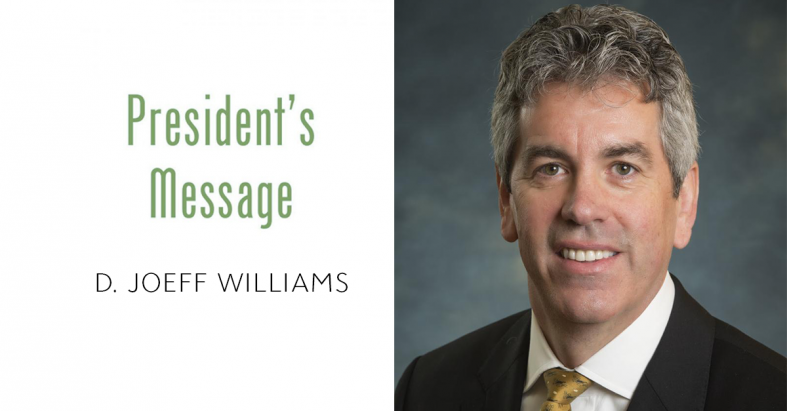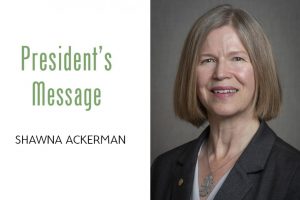By D. Joeff Williams
When I first started thinking about the focus of my next President’s Message, I had already been thinking about the theme of “change.” But given recent events with the global coronavirus pandemic, “change” has taken on a completely different perspective. I hope that all our members are well, and while we all, just as the Academy, have had to adjust to different circumstances over the courses of our lives, some gradual and some not, I know that many of you are dealing with changes that were unimaginable just a few months ago.
I’ve thought a lot about the artistic themes that seemed to me so appropriate for anchoring my first two messages, and I think that over time, seeing how artists change their styles, perspectives—or even their names also resonates with me in these challenging time. Those changes were not always planned, but they do reflect the artists’ ability to persist in making their art in a manner that can still carry the central message of who they are, even as their styles evolve.
Three examples from famous painters come to mind, though there are many more:
- Rembrandt. This is an obvious example, because in Rembrandt’s case he changed how he signed his paintings multiple times. After first using “RH” (his real name was Rembrant Harmenszoon van Rijn), he then switched to his Latin-name monogram “RHL,” then “RHL van Rijn,” then his first name only (“Rembrant”), and finally “Rembrandt” until his death. Rembrandt’s focus also changed over time, from portraits to the group (and huge) work, “Night Watch.”
- Claude Monet. The Parisian master captured the way the both seasons and light change within similar themes, such as the series of paintings of haystacks, Rouen Cathedral, and water lilies at Giverny. These diverse works show how much different aspects of light at different times of the year and the atmosphere of the season changed his perspective and the masterpieces he created as a result.
- Pablo Picasso. You don’t have to go to the Picasso Museum in Barcelona to see the vast changes in Picasso’s paintings over time. After starting in a realist style, his paintings progressively evolved into his more well-known, less-than-lifelike style, as he moved through various periods (Blue, Rose, African) into Cubism, Neoclassicism, and the ultimately the Surrealism now so identified with his work.
I think this theme of change is helpful to understand how the Academy has changed over time, while still keeping a consistent vision focused on both public policy and professionalism. The changes I’ve experienced at the Academy have been purposeful, thoughtful changes that have reflected our purpose to stay independent and objective in our mission of serving the public and the U.S. actuarial profession.
Whether it has been changes in our Board structure and governance to emphasize our independence and objectivity, how we communicate and provide timely materials (most recently podcasts and the “Professionalism First” hub), or how we enrich the value of professionalism (in the U.S. Qualification Standards or the selection of members for the Actuarial Board for Counseling and Discipline and the Actuarial Standards Board), the focus has always been on making sure we stay independent and objective. While the Academy today is different than the Academy of even just 10 years ago in some ways our fundamental essence is the same, and central to the originally intended core vision of one U.S. national organization to establish standards of conduct, practice, and qualification.
So while change has been on everyone’s mind recently, I would offer that in turbulent times like today—with change happening so fast that it’s an effort to keep up—there can also be solace in keeping a consistent approach. The Academy itself has had to adopt operational changes, with staff working remotely in accordance with public health concerns and governmental orders. But throughout, our focus has continued to be how to provide relevant and timely resources to our members to help you address a changing environment. The work of both staff and volunteers to update valuable COVID-19 resources on the Academy website has been amazing.
One other area of consistency—maintaining our commitment to our professional standards in this time of pandemic. This is precisely the time when professionalism demands adherence to these standards will highlight the value actuaries can bring to any discussion with actuarial aspects. As we consider how to meet our continuing professional standards, remember that, there are multiple opportunities for CE, not only from the Academy, but also from other U.S. actuarial professional organizations.
So, in these uncertain times, you can count on the Academy to keep a steady hand on the rudder—changing where we need to, and remaining consistent where that approach is merited. We’ll get through this … together.





